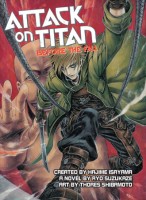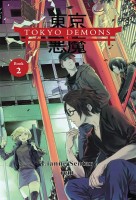 Author: Kouhei Kadono
Author: Kouhei Kadono
Illustrator: Kouji Ogata
Translator: Andrew Cunningham
U.S. publisher: Seven Seas
ISBN: 9781933164205
Released: June 2006
Original release: 1998
After reading Boogiepop and Others, I knew that I needed to read the rest of Kouhei Kadono’s Boogiepop light novel series, or at least all of the volumes that had been released in English. Sadly, out of the more than a dozen volumes, only four of the novels were ever translated and it is unlikely that any others will be. Boogiepop Returns: VS Imaginator, Part 1 is the second Boogiepop novel and the first volume in a two-part story arc. The novel was originally published in Japan in 1998, the same year that the award-winning Boogiepop and Others was released. The English translation of the first part of Boogiepop Returns by Andrew Cunningham was published by Seven Seas in 2006. Seven Seas was also the publisher that released the other three Boogiepop novels available in English as well as some of the Boogiepop manga adaptations (which I have yet to read). Technically, all of those Boogiepop books have gone out of print, but fortunately most of the volumes are still fairly easy to find.
When she was only seventeen, Minahoshi Suiko plummeted from the rooftop of Shinyo Academy. Initially it was believed to have been a suicide, but rumors start circulating among the students that it may have been murder or perhaps something even more sinister, something that is compelling others to follow in Minahoshi’s footsteps. It wouldn’t be the only time that Shinyo Academy has faced inhuman and supernatural influences resulting in tragedy and death. Asukai Jin is a counselor at a local cram school which is attended by several Shinyo Academy students. He seems to be able to look into the hearts of those seeking his aid, offering advice that is uncannily appropriate for each student and their specific situations. The odd ability which allows Asukai to see the flaws of others while being blind to his own has drawn the attention of the same forces a work at Shinyo Academy. The only thing that stands in the way of those forces is the fabled spirit of death Boogiepop, but there are those who are hunting Boogiepop down in order to prevent any sort of interference.
One of the things that I particularly enjoyed about Boogiepop and Others was its narrative structure, and so I was happy to see the first part of Boogiepop Returns use a similar one. Specifically, the story continues to be seen from the perspective of multiple characters, although in this volume the chronology is slightly less disjointed overall. The events in Boogiepop Returns take place both before and after those in Boogiepop and Others. (A handy timeline included in the back of the volume helps to make this all clear.) Although the plots of each novel aren’t directly related, the events of the first are alluded to in the second and both volumes do share some of the same characters. However, the importance of the characters’ individual roles has shifted somewhat. Taniguchi Masaki, for example, was a side character in the first Boogiepop novel; he wasn’t much more than a stepbrother to another important character. But in Boogiepop Returns he is one of the leads in the volume’s ill-fated love story.
The Boogiepop series has a fascinating mix of genres—science fiction, horror, mystery, and even a bit of romance all make an appearance in the novels. There are strong psychological elements and strange and bizarre occurrences, too. I didn’t find the second Boogiepop novel to be quite as dark as the first, but it could still be thoroughly disconcerting and it was consistently engaging. Because Boogiepop Returns is a two-part arc, most of the first volume is spent setting the stage and introducing the major players. At this point the significance of some of the events is still unclear and far more questions have been raised than have been answered. It’s difficult to say just exactly what is going on and perhaps even more challenging to anticipate what will happen next. This will probably either frustrate readers immensely or intrigue them. (As for me, I was intensely intrigued.) Much like Boogiepop and Others, the first part of Boogiepop Returns is peculiar and unsettling. I’m very curious to see how the story will continue to develop in the second volume.




